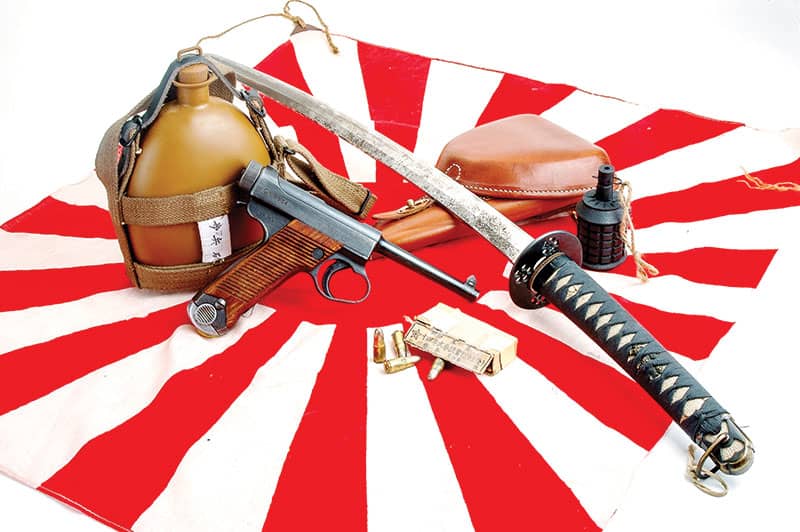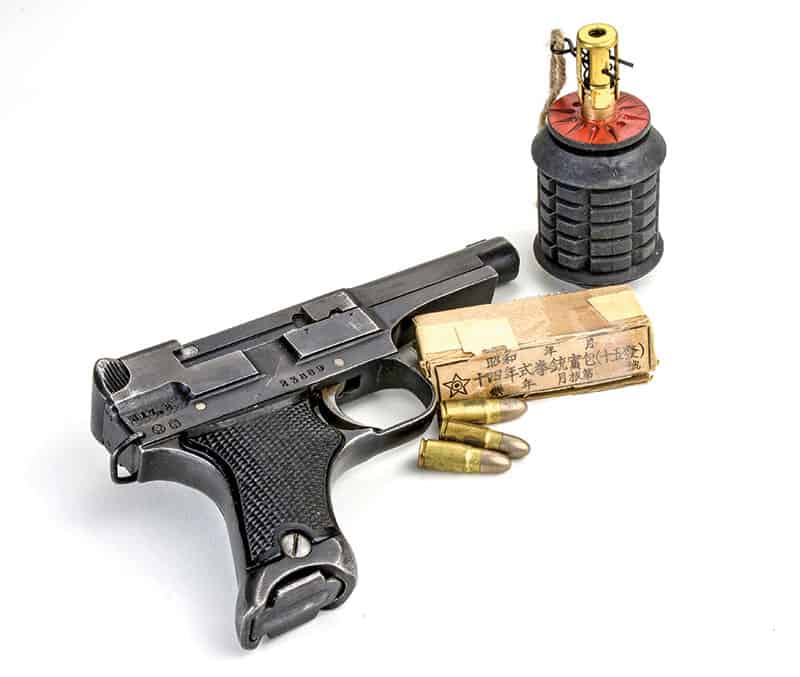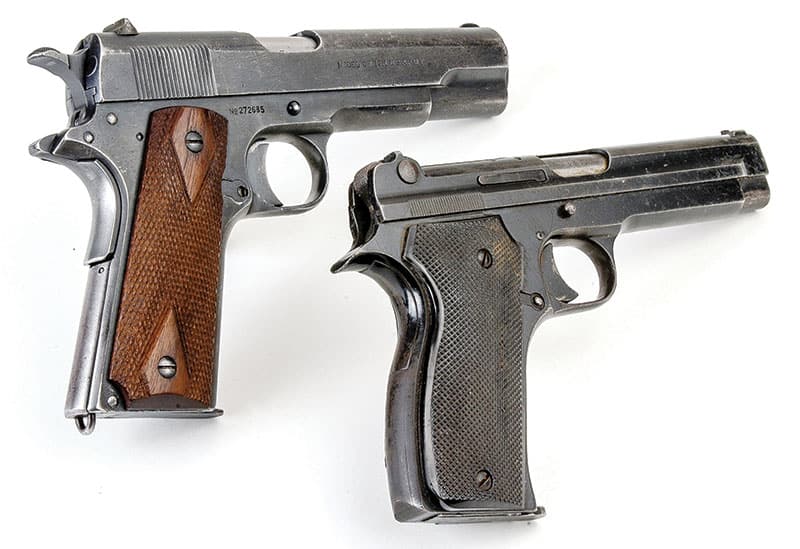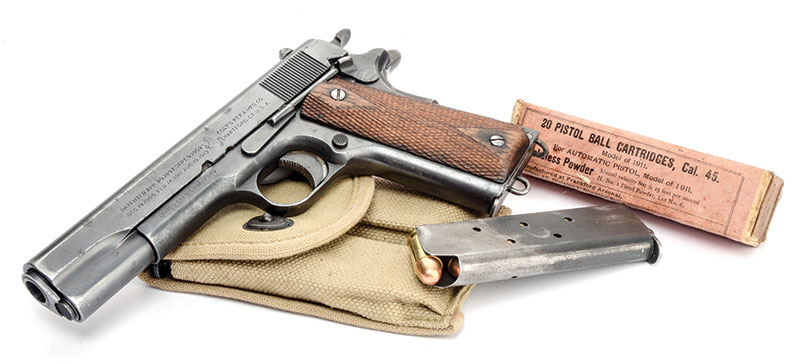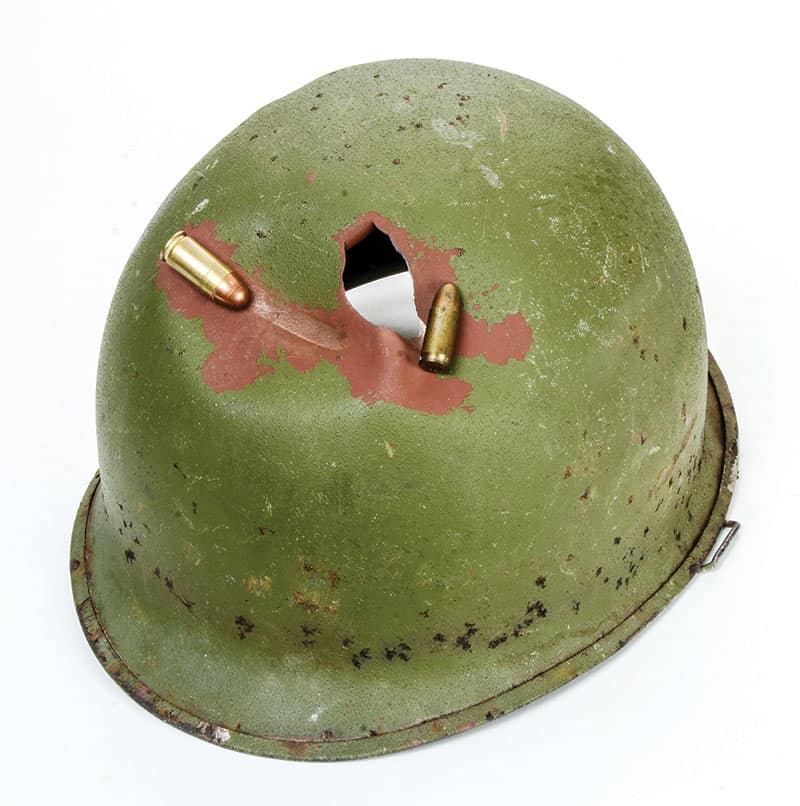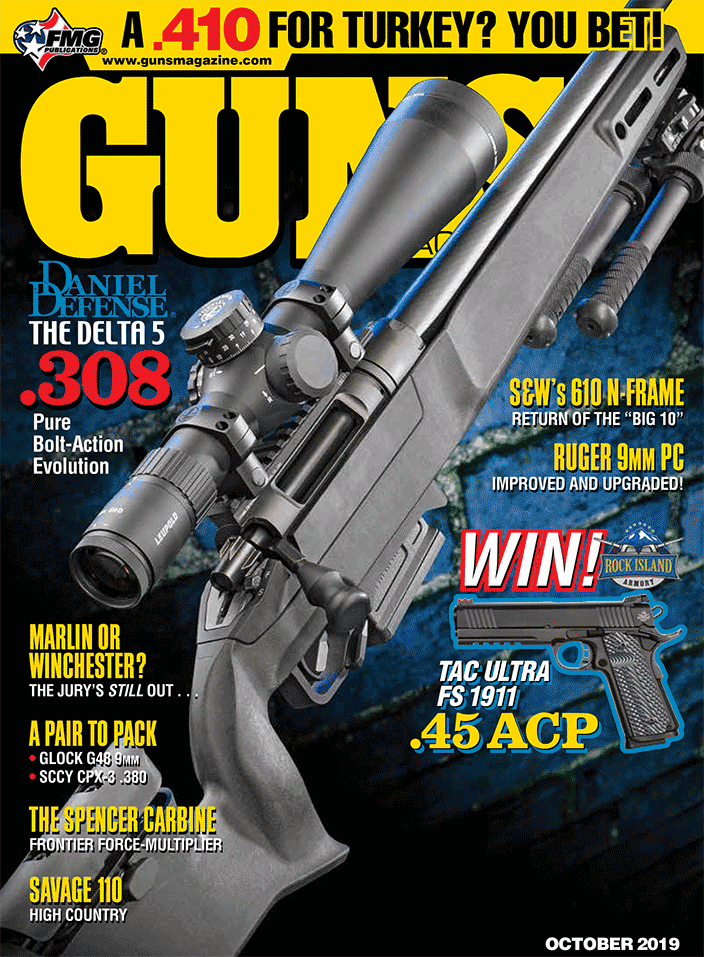Semi-Auto Handguns Of WW2
From Tremendous — to Tremendously Awful
World War II handguns ranged from the poorly thought out single-shot “Liberator .45s” to General Patton’s iconic brace of engraved, ivory stocked sixguns. When building my collection of WWII firearms I decided to eschew handguns that mostly served as ornaments and with which their owners never actually expected to fight. A good example there would be Germany’s Luftwaffe pilots who were issued tiny 6.35mm (.25 ACP to us) semi-autos, or American general officers who were given Colt Pocket Pistols as a badge of rank.
What I wanted for my collection were autos and revolvers issued to frontline combat troops with the full expectation they’d be used for fighting. The major combatant nations all had such but here we’re only going to hit the semi-autos.
Soviet Sizzle
World War II service pistols are an interesting assortment, ranging from the Soviet TT33 in their super-hot 7.65×25 on the small end, to (of course) America’s .45 ACP Government Model. In between were some very practical handguns that in basic style and function are still perfectly serviceable today. Others were bad ideas at the get-go and make you wonder if their designers were humorists.
The Soviet Union’s first-rate combat units usually got TT33s. It’s a traditional single-action semi-auto: a reciprocating slide encasing a barrel which unlocks on firing. Magazine capacity is 8 rounds. Interestingly there is no safety arrangement, which makes importing unaltered ones into this country a bit difficult nowadays. As I said, its 7.62×25 cartridge is a hummer (an 86-gr. bullet at 1,500 fps) and loud from the TT33’s 4½” barrel.
Japan, France, Britain
Japan was capable of manufacturing fine quality weapons but they lacked somewhat in genius when designing good handguns. Col. Nambu was their most famous designer, but next to handgun designers of the West, he was in kindergarten. Evidence of this is the Type 94 semi-auto 8mm Nambu. It has a 3¾” barrel with a 6-round magazine. The 8mm Nambu cartridge propels a 106-gr. bullet at about 1,000 fps. Type 94s are one of the most dangerous handguns to carry with a round chambered. Why? The sear bar is exposed on the pistol’s left side — a light press on it and the gun fires. The earlier Type 14 8mm Nambu is a step up but still has many design flaws. For instance, Type 14 magazines serve as the bolt stop, making it a challenge to extract an empty. When the magazine is freed, the bolt slams shut and has to be fully retracted again to chamber a new round. The Japanese didn’t take the Type 14’s development far enough. Bill Ruger did. He admitted to basing his
Mark I .22LR on it.
The French, being who they are, did a very odd thing. They mated a well-designed and well-made autoloader — the SACM 1935A — to a completely lackluster cartridge. Then to add insult, they painted it black. The cartridge is 7.65×20 Longue, derived precisely from the American .30 round intended for Pedersen Devices (which converted bolt action Model 1903s to semi-auto function). The French ballistics had 85-gr. bullets moving around 1,100 fps. Model 1935As are trim, well-balanced handguns with an 8-round magazine. If they’d been chambered for something like 9mm Largo or .38 Super, they could have been near the top of practical WWII sidearms.
Until well into World War II the Brits stuck with revolvers whose basic designs were old news in the 1880s. Finally, somebody in Britain’s stuffed-shirt military hierarchy got their head out of a shadowy place and gave their paratroopers an adequate sidearm. Those were knockoffs of FN’s Browning Hi Power (aka the P35), made by the John Inglis Company of Canada. Not only was its 9mm Parabellum cartridge much better than British revolver rounds, the P35’s magazine held 13 of them.
German Classics
Rest assured a handgun made in Germany was excellently manufactured. Such were P08 9mms (Lugers) which the German Army dropped officially in 1938 while Luftwaffe ground-combat units kept them until the end in 1945. As so many other nations’ autoloaders, Lugers had 8-round magazines. Their toggle-type action is certainly unique. Lugers are wonderfully made and finished handguns and millions were used in combat, but truthfully their heyday had passed by WWII.
Luger’s successor was the Walther designed P38, also in 9mm with an 8-round magazine. Of all the handguns described here, P38s were the only ones with a double-action trigger mechanism. Interestingly, P38 slides are to the rear of the barrel instead of surrounding it full length like most other semi-autos. One feature both P08 and P38 shared was dovetailed front sights. The sight blade could be moved laterally for windage and a range of heights were available to help zero the elevation. Both of these German autoloaders had 5″ barrels.
Now we return to the FN P35 Hi Power. FN stands for Fabrique Nationale in Belgium. Germany occupied the country in 1940 and kept FN’s machines turning. Many thousands of P35s were then issued to the Wehrmacht. It has been written SS units liked P35s. Of all the pistols mentioned herein the P35 has the credit of being issued to both sides in the European conflict. British paratroopers had Inglis-made P35s and Germany handed FN ones out to many types of combat troops. Both “brands” of P35 had 4-5/8″ barrels. It’s nigh on impossible to pin down 9mm Parabellum military loads used by many different nations. My best stab at it is a 115-gr. FMJ at about 1,300 fps. (Incidentally, it’s the same as rated for 9mm NATO; same cartridge just different moniker.)
An American Legend
Lastly, we get to the United States. All our armed forces carried .45 ACP Model 1911s and 1911A1s for frontline issue. The easiest way to discern the variations is by their serial numbers: up to 700,000 are considered 1911s and after that they are 1911A1s. Generally speaking, 1911s had walnut grips and 1911A1s had synthetic ones. The big .45 cartridge meant magazines could only hold 7 rounds with bullet weight of 230 grains at approximately 800 fps. Although U.S. military doctrine decreed the 1911s/A1s be carried with chambers empty, the design is well set up for carrying “cocked and locked” with a loaded chamber because of the grip safety as well as a thumb safety on left side of frame.
Considering the above-mentioned factors, what nation fielded the best combat auto of World War II? Despite being a patriotic American, I must say the .45 Model 1911/1911A1 is in 2nd Place while the 9mm Hi Powers by Inglis and FN are in the top spot with their practical 13-round magazines. I’d say the double-action German P38 rates a solid 3rd Place.

